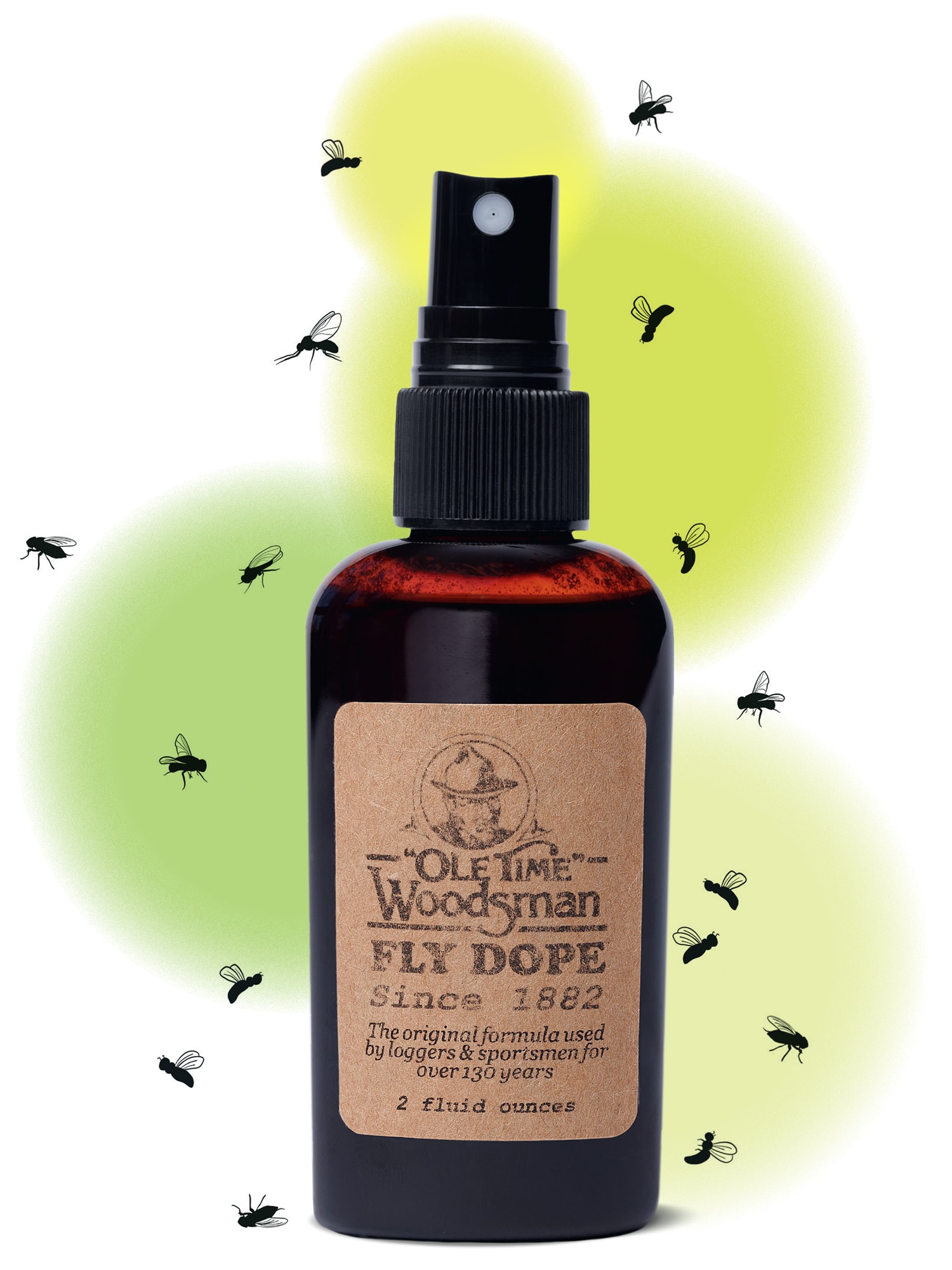An Ode to Ole Time Woodsman Fly Dope
Ole Time Woodsman Fly Dope, one of the oldest insect repellents in the country, keeps blackflies away and memories alive.

Coffee By Design | Portland, Maine
Photo Credit : Katherine Keenan“Black flies, no-see-ums, deer flies, gnats and mosquitoes were instituted by the devil to force people to live in cities where he could get at them better….” —Ernest Hemingway
Hemingway wrote that line in 1920, but the Pilgrims could have related. They sent a letter to their London sponsors in 1623 reporting they were “much annoyed by mosquitoes” and hoping to relocate their settlement. Lots of so-called solutions were tried over the years, but things like sweetgrass necklaces and bear fat salves never really caught on. Trekking through Maine in the 1850s, Henry David Thoreau used an ointment made from oil of turpentine, spearmint, and camphor. After applying it to his face and hands, he decided he preferred the bites of Maine’s tiny but voracious blackflies.
Little did Thoreau know that the very state that hosted such relentless tormentors would, half a century later, produce one of New England’s most enduring defenses against them.
Ole Time Woodsman Fly Dope, as the company story goes, was born in 1910 after an angler named Obie Sherer was driven from a favorite Maine fishing hole by blackflies and mosquitoes. Research led him to an 1882 recipe for a concoction used by hunters to disguise their scent, which he then adapted for his own use to keep insects at bay.
One day a logging crew saw Sherer fishing in peace and wanted to know his secret. He made them a batch of his “fly dope,” and when they came back clamoring for more, Sherer saw a business opportunity. And in honor of his first customers, he named his product “Ole Time Woodsman.”
While the exact recipe is a closely held secret, the ingredients are not. “It’s a mixture of pine tar, petroleum distillates like mineral oil, and essential oils,” explains Maine native Ken “Skip” Theobald III, the company’s owner since 2010. The fly dope is made by hand, mixed in small batches in Theobald’s garage.
The label lists pine tar, paraffin, citronella, liquid smoke, camphor, pennyroyal, and oil of bay as active ingredients; the other 55 percent is white mineral oil. Its pungent aroma is hard to describe. “The smell of a primal pine forest,” Theobald says, adding, “If the bugs can’t find you, they can’t bite you.” In any case, the scent is downright ambrosial for those who find that it disguises them from biting insects.
And in some devoted users, Ole Time Woodsman also stirs up beloved memories. As one fan wrote: “That aroma reminds me of the many hours I spent fishing with my grandfather…. I can’t wait to rub some on and imagine he’s right there fishing with me again.”







